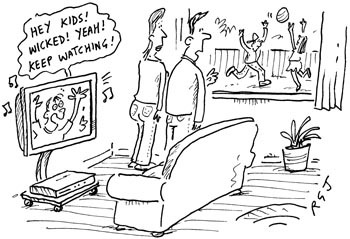It isn’t often that we get the chance to see a semi-opera, of which Purcell and Dryden’s King Arthur is a paradigm. And after seeing a competent production in Bury St Edmunds last week, I can’t say that I regret the infrequency of performances. This one was in the enchanting setting of the Theatre Royal, very recently restored and quite magnificent, a tiny theatre with excellent acoustics, and a fine example of English rococo. The production was a joint one with three German theatres, one of them the still more exquisite Markgrave’s Opera House in Bayreuth. The cast was of native English speakers, and the German audiences would have had an industrious evening reading the surtitles, for there is a vast acreage of text. The director Colin Blumenau explains in the programme that King Arthur is a work of some complexity, not just the epic story of Arthur repelling the last of the recalcitrant Saxons and finally achieving union with his beloved Emmeline.
It is a work of allegory, a form in which contemporary audiences — or perhaps I should speak only for myself — aren’t proficient. We have been taught, of course, to look for ‘deeper layers’ or ‘darker sides’ of artists’ works, but they only give us a thrill if they somehow escape from the creators’ control, at least partially. Dryden was an adept at political satire and allegory, but in his masterpiece Absalom and Achitophel the satirical intent is impossible to ignore; while the truth about King Arthur is that the text is of such numbing tedium that one exhausts all one’s resources in maintaining concentration, and then finds that there is very little reward.
The plot is a shambling series of incidents, none of them character-creating or –revealing, or of the least intrinsic interest. Then the defining feature of semi-opera, that the speaking characters don’t sing, means that the music mainly serves no dramatic purpose, but has only the effect of a series of inserts, welcome relief, one agrees, but in no way adding up to a unified experience.
Given that this production is itinerant and on a shoestring, the lack of striking visual effects, though lamented by Blumenau, is inevitable. Why he should frame the whole thing in Morris Dancing is less clear. An already long evening becomes insufferably prolix. Skilful use of cloths and slightly exaggerated gestures means that the plot, such as it is, is followable. The acting and the musical performance were both adequate, if not the kind you would want a DVD of, supposing you wanted one at all.
The only mistake was the casting of Emmeline, young, beautiful and blind until part way through Act 3 (i.e., until about an hour and a half into the performance — there are five acts); Laura Cameron looks and acts as if she were an elderly lady in a 1940s British movie. The Arthur of the towering Clayton Nemrow alone managed to strike some balance between seriousness and send-up, but I think it may not have been the right one. So what does one do with semi-operas? Unstageable, they also make indigestible listening on records, most of the musical numbers being so brief that they require a context. Given the quality of a fair proportion of Purcell’s music here, that is painful, and one can only be glad that Handel arrived on the scene and realised that the Italian example had to be followed.
And as it happened, for me Handel was the composer of the next opera I saw, Teseo at the Hackney Empire, the beginning of English Touring Opera’s autumn season. But the occasion didn’t have the redemptive quality which I was sorely in need of. I’m used to very high standards from ETO, and this production doesn’t achieve them, though if it’s at a theatre near you — it is touring to 15 — it is a moderately enjoyable affair. As so often most of the best bits come well towards the end.
James Conway, ETO’s general director, also directed this production; presumably it was he who decided that the opera be sung in Italian, with the surtitles for the copious recitatives taken from the original wordbook, so that we had to cope with distressed typeface, as well as their moving along at a rate that would test a hardened speed reader, besides which the lettering in fairly light grey was on a slightly lighter grey background. By the interval my eyes were in agony. The arias are given in summary form, no easier to read but there for longer.
The set for the first three acts is hideous, apparently the back of a wooden kitchen unit. When it moved round that’s just what it turned out to be. The characters, dressed foppishly in clothes contemporary with the composition, appear, sing, walk off. In this opera all six characters are in the soprano-contralto range. I find that wearing. The singers dispatch their music with élan, and some of it is beautiful, while lots of it is formulaic. Medea is taken by Jeni Bern, sounding more like a witch than a sorceress, which is a strain when she has such quantities of imprecation to negotiate. By far the most rewarding singing of the evening came from Gail Pearson, as the heroine Agilea.






Comments